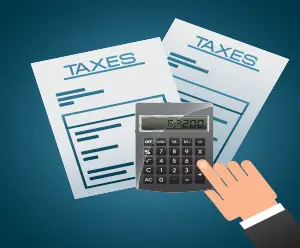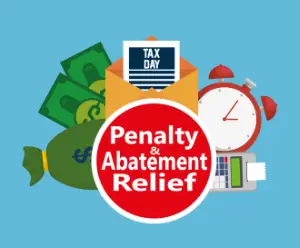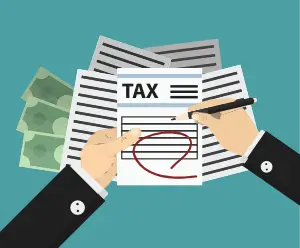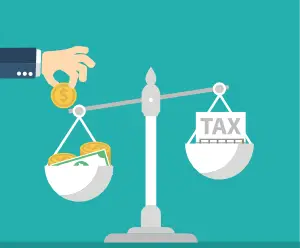
Understanding the IRS Substitute for Return
Click to ask Mike Ask Mike The Internal Revenue Service (IRS) Substitute for Return (SFR) is a term many taxpayers

Taxpayers often find themselves grappling with unexpected challenges that may hinder their ability to meet their tax obligations. The Internal Revenue Service (IRS), recognizing the myriad of reasons that can lead to non-compliance, has implemented penalty abatement programs to offer relief to eligible individuals and businesses. In this article, we will explore the significance of these programs, the various types available, and the application process, shedding light on how they serve as a crucial lifeline for those facing unforeseen circumstances.
Understanding IRS Penalties
The IRS has the authority to impose penalties for a variety of reasons, including late filing, late payment, accuracy-related issues, and failure to pay estimated taxes. These penalties can quickly accumulate, resulting in a significant financial burden for taxpayers. However, the IRS acknowledges that life is unpredictable, and individuals may encounter situations beyond their control that impact their ability to comply with tax regulations.
Reasons for Penalties and Eligibility for Abatement
Eligibility for penalty abatement is contingent upon the taxpayer demonstrating reasonable cause for their failure to comply with tax obligations. This may include unexpected medical emergencies, natural disasters, or other unforeseen circumstances. To qualify, taxpayers must prove that their non-compliance was due to reasonable cause and not willful neglect.
Reasonable cause encompasses a wide range of situations, such as serious illness, the death of a family member, or other unavoidable absences. Importantly, providing documentation supporting the claim of reasonable cause is crucial when applying for penalty relief. Each case is evaluated individually, with the IRS considering the unique circumstances surrounding the taxpayer’s situation.
Types of Penalty Abatement Programs
The IRS has established several penalty abatement programs, each tailored to address specific situations and provide relief for eligible taxpayers. Here are some key programs:
First-Time Penalty Abatement (FTA):
Reasonable Cause Abatement:
Statutory Exceptions:
Correction of IRS Error:
Application Process
Applying for penalty abatement involves submitting a written request to the IRS, detailing the circumstances leading to non-compliance and specifying the penalties for which relief is sought. Supporting documentation, such as medical records or insurance claims, should be included to substantiate the claim of reasonable cause.
It’s essential to adhere to the guidelines outlined by the IRS for each penalty abatement program. Providing comprehensive and accurate information, along with supporting documentation, enhances the chances of a successful application.
Benefits of Penalty Abatement
Engaging in IRS penalty abatement programs offers significant benefits for eligible taxpayers:
Financial Relief:
Rebuilding Compliance History:
Stress Reduction:
Conclusion
Navigating the intricate landscape of IRS penalty abatement programs is crucial for taxpayers facing unforeseen challenges that may hinder their tax compliance. These programs serve as a lifeline, providing relief in the form of reduced or eliminated penalties for those who can demonstrate reasonable cause.
You can now ask our AI assistant any questions you have about your tax debt or any tax-related issues. Whether you’re unsure about payment plans, need clarification on penalties, or want information on how to resolve your tax situation. Our AI is ready to assist you with all your tax-related concerns.

By interacting with our AI assistance, you agree to our terms & conditions. Enjoy our AI Tax Assistant responsibly.
Ask me any questions...
Related Posts

Click to ask Mike Ask Mike The Internal Revenue Service (IRS) Substitute for Return (SFR) is a term many taxpayers

Click to ask Mike Ask Mike The Internal Revenue Service (IRS) Substitute for Return (SFR) is a term many taxpayers

Click to ask Mike Ask Mike The Internal Revenue Service typically operates within a 10-year window, commencing from the

Click to ask Mike Ask Mike The Internal Revenue Service (IRS) operates within specific timeframes dictated by statutes of limitations

Click to ask Mike Ask Mike understanding the ins and outs of the 10-year statute of limitations (SOL) is essential.
Recent Posts

Click to ask Mike Ask Mike The Internal Revenue Service (IRS) Substitute for Return (SFR) is a term many taxpayers

Click to ask Mike Ask Mike The Internal Revenue Service (IRS) Substitute for Return (SFR) is a term many taxpayers

Click to ask Mike Ask Mike The Internal Revenue Service typically operates within a 10-year window, commencing from the

Click to ask Mike Ask Mike The Internal Revenue Service (IRS) operates within specific timeframes dictated by statutes of limitations

Click to ask Mike Ask Mike understanding the ins and outs of the 10-year statute of limitations (SOL) is essential.
Disclaimer: This is educational content, not legal, accounting, or tax advice.
This is a tax debt resource website, not to be used in lieu of a tax attorney or for legal advice. All information, Ai chat responses, articles, materials, and content are intended to inform users on a variety of tax topics. In no way is it intended to be construed as accounting, legal, tax, other services or advice. This site is not intended to be used to avoid tax penalties or tax debt that may be imposed by law. Terms and Conditions. Your use of this site constitutes acceptance of the following terms and conditions.
This is a tax debt resource website, not to be used in lieu of a tax attorney or for legal advice. All information, Ai chat responses, articles, materials, and content are intended to inform users on a variety of tax topics. In no way is it intended to be construed as accounting, legal, tax, other services or advice. This site is not intended to be used to avoid tax penalties or tax debt that may be imposed by law. Terms and Conditions. Your use of this site constitutes acceptance of the following terms and conditions.
© 2023 · Tax Debt Monster, Inc. All rights reserved

For all Tax Professionals that would like to partner up with us. By partnering with us, you’ll help us connect and make a positive impact in the tax community. Partner up with us and receive a complimentary Ai Tax Sidekick to help support your clients at no cost! Click here if you’re interested in our Partner-Up program

By interacting with our AI assistance, you agree to our terms & conditions. Enjoy our AI Tax Assistant responsibly.
How may I help you with your tax issue?